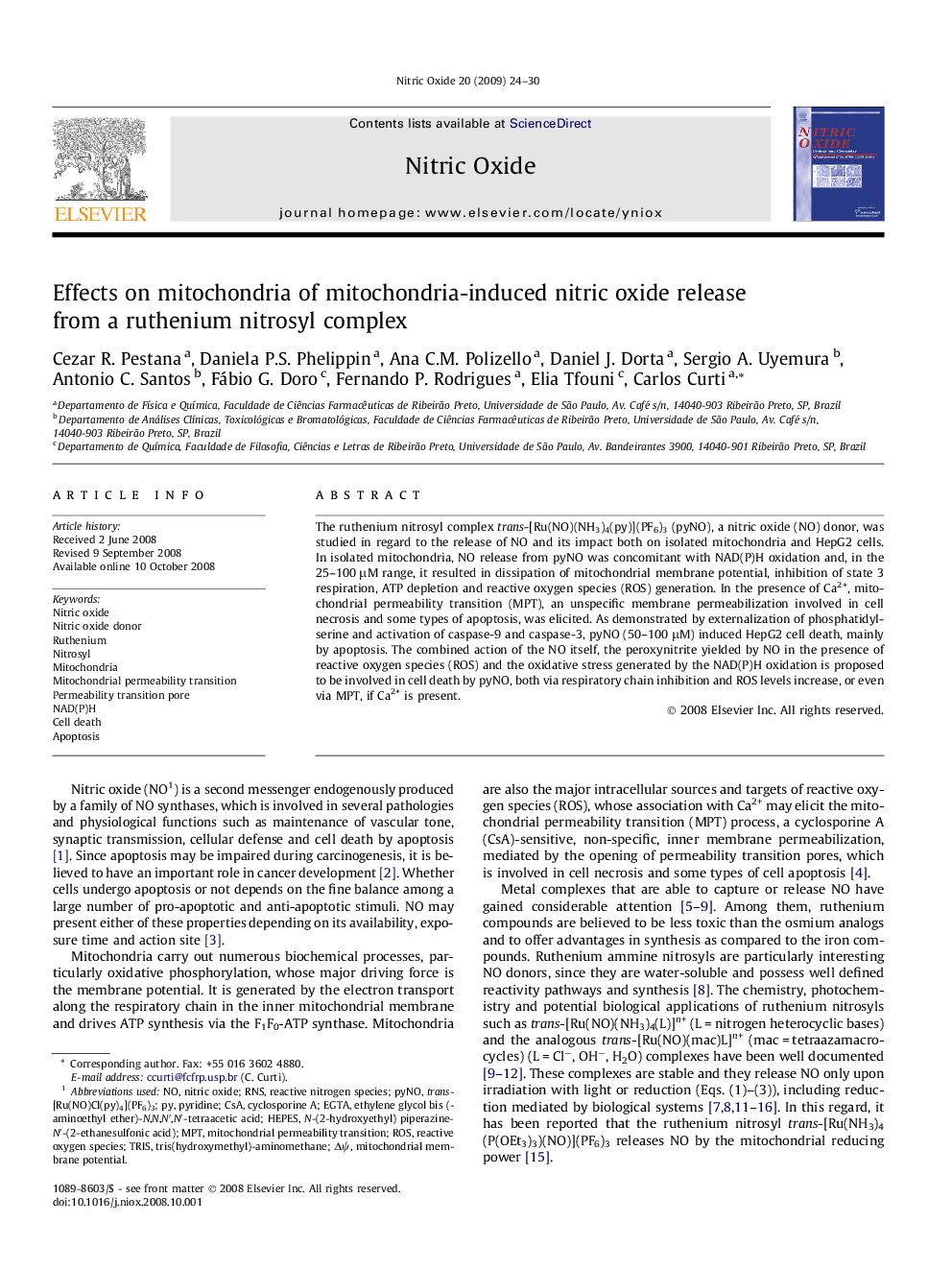| Article ID | Journal | Published Year | Pages | File Type |
|---|---|---|---|---|
| 2001294 | Nitric Oxide | 2009 | 7 Pages |
Abstract
The ruthenium nitrosyl complex trans-[Ru(NO)(NH3)4(py)](PF6)3 (pyNO), a nitric oxide (NO) donor, was studied in regard to the release of NO and its impact both on isolated mitochondria and HepG2 cells. In isolated mitochondria, NO release from pyNO was concomitant with NAD(P)H oxidation and, in the 25-100 μM range, it resulted in dissipation of mitochondrial membrane potential, inhibition of state 3 respiration, ATP depletion and reactive oxygen species (ROS) generation. In the presence of Ca2+, mitochondrial permeability transition (MPT), an unspecific membrane permeabilization involved in cell necrosis and some types of apoptosis, was elicited. As demonstrated by externalization of phosphatidylserine and activation of caspase-9 and caspase-3, pyNO (50-100 μM) induced HepG2 cell death, mainly by apoptosis. The combined action of the NO itself, the peroxynitrite yielded by NO in the presence of reactive oxygen species (ROS) and the oxidative stress generated by the NAD(P)H oxidation is proposed to be involved in cell death by pyNO, both via respiratory chain inhibition and ROS levels increase, or even via MPT, if Ca2+ is present.
Keywords
Related Topics
Life Sciences
Biochemistry, Genetics and Molecular Biology
Biochemistry
Authors
Cezar R. Pestana, Daniela P.S. Phelippin, Ana C.M. Polizello, Daniel J. Dorta, Sergio A. Uyemura, Antonio C. Santos, Fábio G. Doro, Fernando P. Rodrigues, Elia Tfouni, Carlos Curti,
